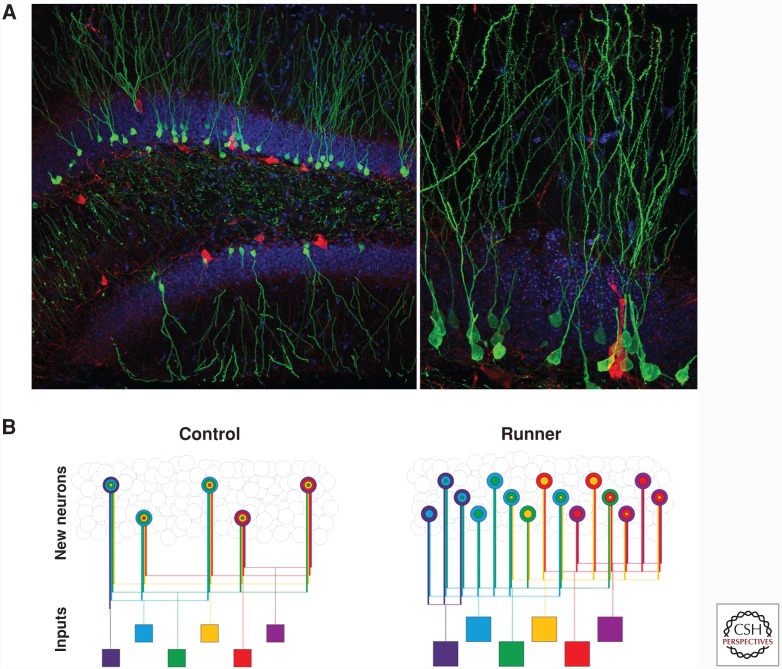Figure 2.
Neurogenesis in the adult mouse dentate gyrus (DG) of the hippocampus and a diagram of modification of new neuron network by running. (A) Photomicrographs of new neurons (green) in a coronal mouse brain section; a mouse 2 months after injection with retrovirus-expressing green fluorescent protein (GFP) in the DG. Section was stained for GFP (green) and GABAergic inhibitory interneuron marker parvalbumin (red), and nuclei were labeled with 4′,6-diamidino-2-phenylindole (DAPI, blue). (B) Diagram illustrating how running reorganizes the network of new hippocampal neurons (Vivar et al. 2016). One month of running in male C57Bl/6 mice enhanced DG neurogenesis (threefold). Afferent input (squares) was also increased, but less so (twofold). The resulting change in new neuron connectivity may promote sparse encoding of information and result in a more robust memory-processing system. The expansion of the neural network and enhanced distribution of information over new DG cells may provide more structural redundancy in which failure of one pathway can be compensated for by another.

